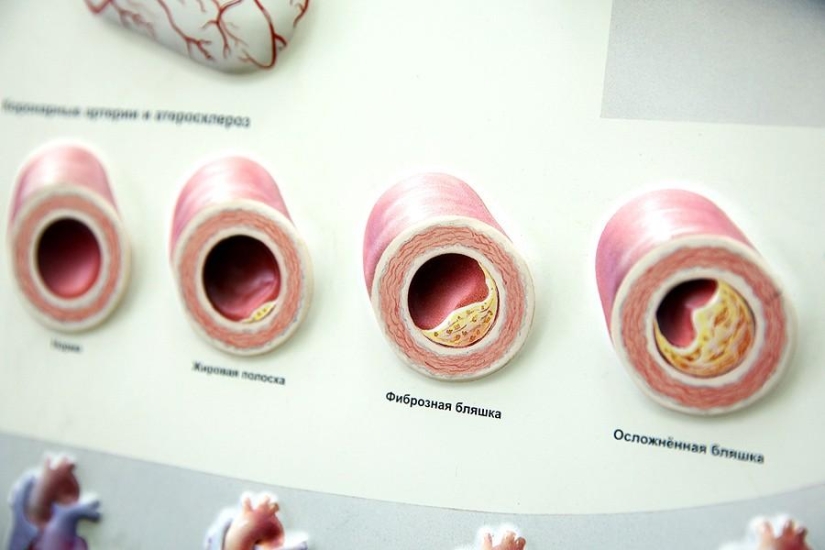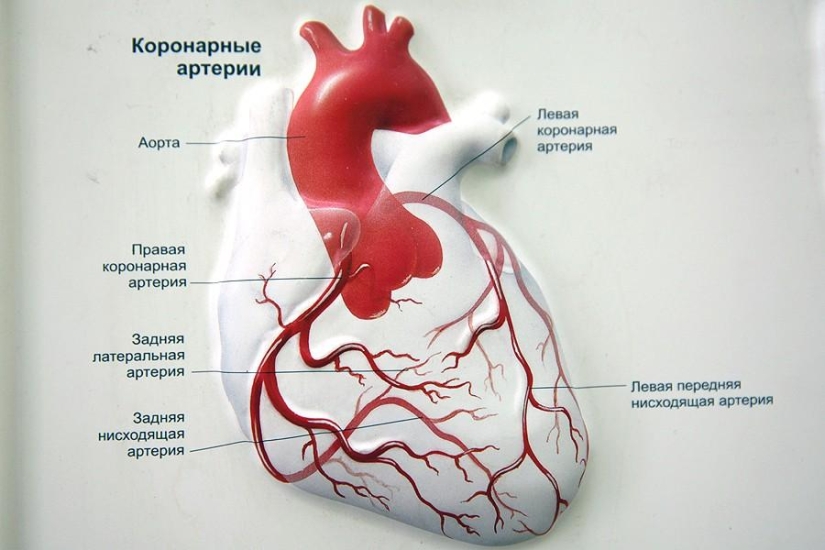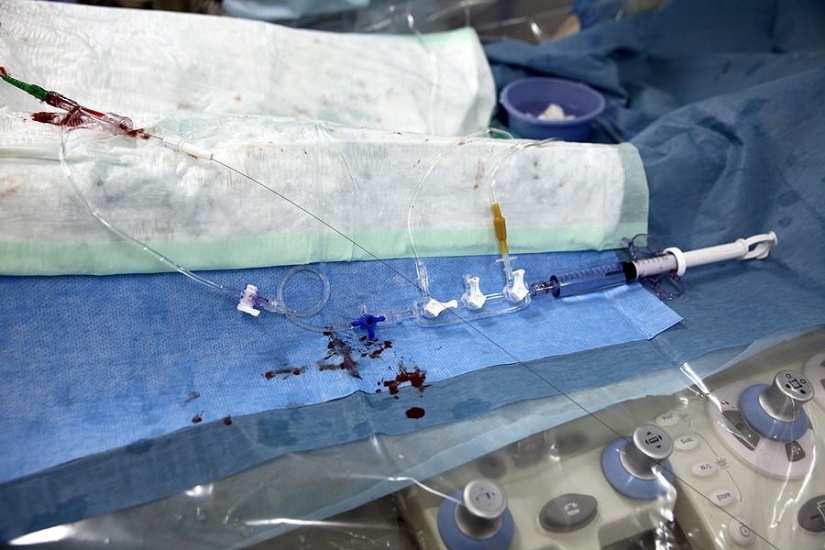Matters of the Heart, or Operation Without Cuts
Categories: Health and Medicine
By Pictolic https://pictolic.com/article/matters-of-the-heart-or-operation-without-cuts.htmlDaria Karakulova writes: “Morning. Petroverigsky lane, 10. At this Moscow address in the Kitay-Gorod area, I arrived at the angiography.su federal center for the diagnosis and treatment of cardiovascular diseases, which is part of the state research center for preventive medicine, to put on a sterile suit again and visit in the operating room.
There will still be some blood. I think I should warn impressionable people about this before they open the entire post.
(Total 18 photos)

Source: JJournal / daryadarya
Almost a year ago, I filmed the birth of a baby by caesarean section in the maternity hospital on Sokol and made a post about it. This time, the operation promised to be virtually bloodless, despite the fact that it is related to cardiac surgery.

1. The word from the title - angiography - is a method of examining blood vessels using x-rays and contrast fluid. It is used to detect damage and defects. Without it, the operation that I am going to talk about - stenting - would not have been possible.
Our patient is already familiar to readers of the collective magazine freedom. This is the Pope of Oleg Barmin Sergey Iosifovich.
Those who have never heard of cholesterol plaques have not watched Elena Malysheva's show. Plaques are deposits on the inner walls of blood vessels that have accumulated over the years. They are similar in texture to thick wax. The plaque consists not only of cholesterol, calcium in the blood sticks to it, making the deposits even more dense. And this whole structure slowly but surely clogs the vessels, preventing our fiery motor, or rather the pump, from delivering nutrients and oxygen to various organs, including the heart itself.

2. Before the advent of the stenting method, which will be discussed, the doctors were armed only with the surgical method of bypass surgery, which became popularly famous thanks to the operation on the heart of Boris Nikolayevich Yeltsin in 1996 in a round operating room. I remember this case vividly (a memory from childhood), although a lot of famous people have done a similar operation.
Shunting is an abdominal operation. A person is given anesthesia, they cut the chest (they cut it, they can’t do it with one scalpel), they stop the heart and start the artificial circulation system. The beating heart beats very strongly and interferes with the operation, so it has to be stopped. To get to all the arteries and shunt, you need to get the heart and turn it over. A shunt is a donor artery taken from the patient himself, for example, from the arm. A lot of stress on the body.
During stenting, the patient remains conscious (everything happens under local anesthesia), can hold his breath or take deep breaths at the request of the doctor. Blood loss is minimal, and the incisions are tiny, because the arteries are entered through a catheter, which is usually inserted into the femoral artery. And they put a stent - a mechanical vasodilator. All in all, an elegant operation (-:

3. Sergey Iosifovich was operated on in three stages. I ended up on the final operation in the series. You cannot place all stents at once.
The surgical table and the angiograph (a semicircular device hanging over the patient) form a single mechanism that works together. The table moves back and forth, and the machine rotates around the table to take x-rays of the heart from different angles.
The patient is placed on the table, fixed and connected to the heart monitor.

4. To make the device of the angiograph clear, I will show it separately. It's a small angiograph, not as big as the ones in the operating room. If necessary, it can even be brought to the ward.
It works quite simply. An emitter is installed below, a converter is installed at the top (a smile is pasted on it), from which a signal with an image is already transmitted to the monitor. Scattering of X-rays in space does not actually occur, however, everyone present in the operating room is protected. About eight such operations are performed per day.

5. A special catheter is inserted through a vessel on the arm or thigh, as in our case.

6. A thin metal wire, a conductor, is inserted through the catheter into the artery to deliver the stent to the site of blockage. I was amazed at its length!

7. The stent - a mesh cylinder - is attached to the end of this wire in a compressed state. It is mounted on a balloon that will be inflated at the right time to deploy the stent. Initially, this design is not thicker than the conductor itself.

8. This is what an open stent looks like.

9. And this is a scale model of a different type of stent. In the case when the walls of the vessels are damaged, they are installed with a membrane. They not only support the vessel in the open state, but also serve as the walls of the vessels.

10. All through the same catheter, an iodine-containing contrast agent is introduced. With the blood flow, it fills the coronary arteries. This allows the x-ray to visualize them and calculate the blockage sites, on which stents will be placed.

11. This is the Amazon pool obtained by injecting contrast.

12. All eyes on monitors! The entire stent placement process is observed through X-ray television.

13. After the stent is delivered into place, the balloon on which it is attached must be inflated. This is done using a device with a manometer (pressure meter). This device, which looks like a large syringe, is visible in the photo with long conductor wires.
The stent expands and is pressed into the inner wall of the vessel. To ensure that the stent has expanded correctly, the balloon remains inflated for twenty to thirty seconds. It is then deflated and pulled out of the artery on a wire. The stent remains and maintains the lumen of the vessel.

14. Depending on the size of the affected vessel, one or more stents may be used. In this case, they are overlapped one after the other.

15. And here is how the stent works. These are screenshots from the X-ray TV.
In the first picture, we see only one artery, a curly one. But another one should be visible, below it. Because of the plaque, the blood flow is completely blocked.
The thick sausage on the second is a stent that has just been deployed. The arteries are not visible because the contrast is not running in them, but the wires are just visible.
The third one shows the result. An artery appeared, blood flowed. Now compare the first picture with the third one again.

16. The concept of expanding the affected areas of the vessel with the help of a certain frame was proposed by Charles Dotter forty years ago. The development of the method took a long time, the first operation using this technology was performed by a group of French surgeons only in 1986. And only in 1993, the effectiveness of the method was proven to restore the patency of the coronary artery and keep it in a new state in the future.
Currently, foreign companies have developed about 400 different models of stents. In our case, this is Cordis from Johnson & Johnson. Artem Shanoyan, head of the department of X-ray endovascular diagnostic and treatment methods at the center, answered my question about Russian stent manufacturers that they simply do not exist.
While writing a post, I found news a year ago that the Renova group of companies established Stentex LLC, a company for the development and production of a line of medical products for interventional cardiology based on its own technological complex. The site is under reconstruction, but there are two vacancies on HeHe.

17. The operation lasts about half an hour. A pressure bandage is applied to the arterial puncture site. From the operating room, the patient is sent to the intensive care unit, and two hours later to the general ward, from where you can already scribble joyful SMS to relatives. And in a few days they will be able to see each other at home.
Lifestyle restrictions typical for heart patients are usually removed after stenting, the person returns to normal life, and observation is carried out periodically by a doctor at the place of residence.

18. Post passed, your heart Dashechka.
Recent articles

Kevin Mitnick is a name that became legendary in the world of information technology back in the last century. In the 1990s, he was ...

Professional poker players are undoubtedly gambling people. Even being away from the poker tables, they can't resist playing and ...
Related articles

Many are familiar with such a phenomenon as flies in front of their eyes. These are floating muddy spots and dots of different ...

This branch of medicine as transplantation, there are more than a hundred years. Over this time there have been many successful and ...

An old saying says that you can't buy health. It is not entirely true, because health can be well improved, however, for a lot of ...

Leonid Gaidai's comedy "Ivan Vasilyevich changes his profession" has been supplying us with catch phrases for half a century. But ...